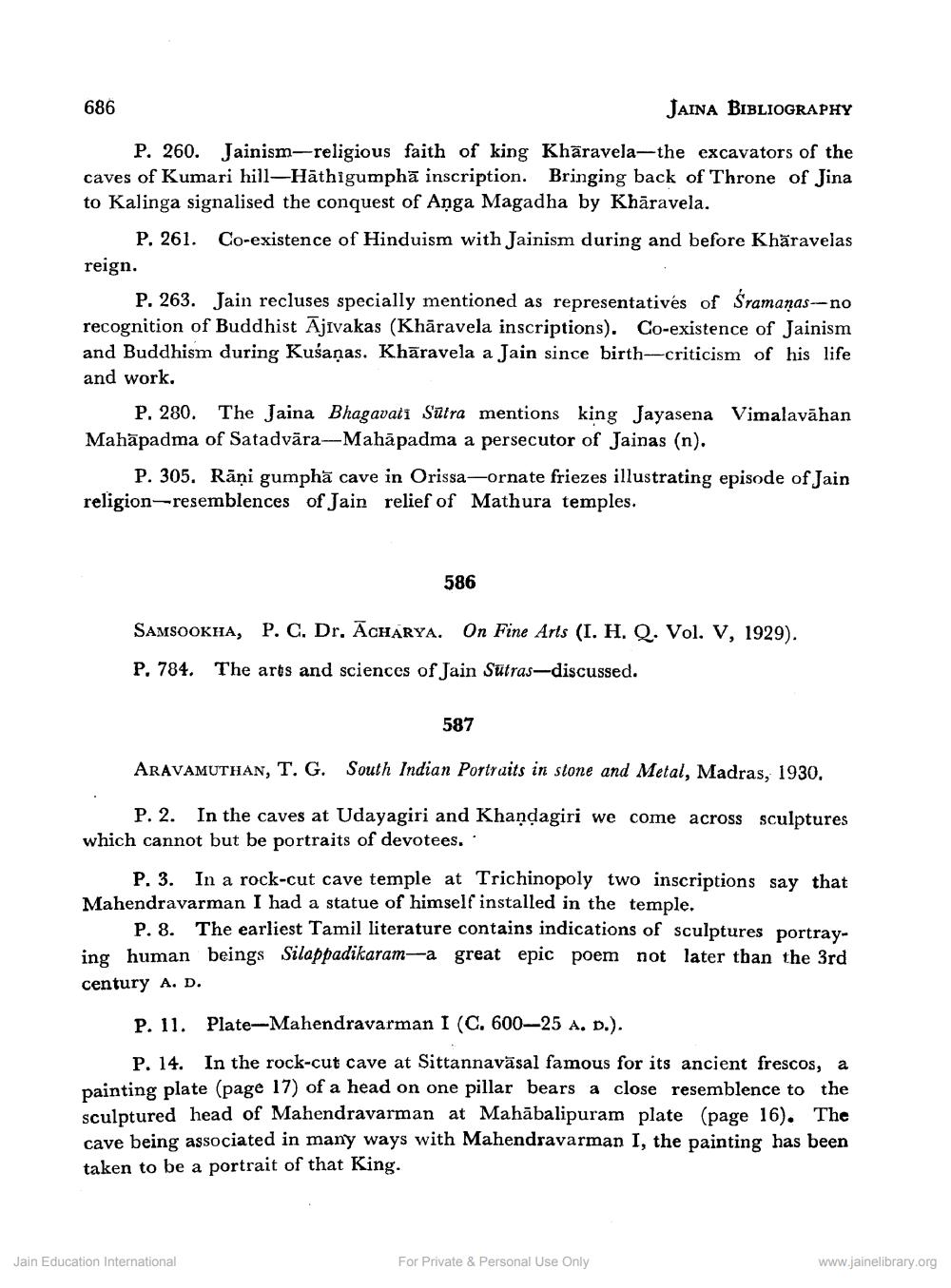________________
JAINA BIBLIOGRAPHY
P. 260. Jainism-religious faith of king Kharavela-the excavators of the caves of Kumari hill-Häthigumpha inscription. Bringing back of Throne of Jina to Kalinga signalised the conquest of Anga Magadha by Khāravela.
Co-existence of Hinduism with Jainism during and before Kharavelas
686
reign.
P. 263. Jain recluses specially mentioned as representatives of Sramanas-no recognition of Buddhist Ajivakas (Khāravela inscriptions). Co-existence of Jainism and Buddhism during Kušanas. Kharavela a Jain since birth-criticism of his life and work.
P. 280. The Jaina Bhagavati Sutra mentions king Jayasena Vimalavāhan Mahapadma of Satadvära-Mahāpadma a persecutor of Jainas (n).
P. 305. Rani gumpha cave in Orissa-ornate friezes illustrating episode of Jain religion resemblences of Jain relief of Mathura temples.
586
SAMSOOKHA, P. C. Dr. ACHARYA. On Fine Arts (I. H. Q. Vol. V, 1929). P. 784. The arts and sciences of Jain Sutras-discussed.
587
ARAVAMUTHAN, T. G. South Indian Portraits in stone and Metal, Madras, 1930.
P. 2. In the caves at Udayagiri and Khandagiri we come across sculptures which cannot but be portraits of devotees.
In a rock-cut cave temple at Trichinopoly two inscriptions say that Mahendravarman I had a statue of himself installed in the temple.
P. 8. The earliest Tamil literature contains indications of sculptures portraying human beings Silappadikaram-a great epic poem not later than the 3rd century A. D.
Jain Education International
P. 11. Plate-Mahendravarman I (C. 600-25 A. d.).
P. 14. In the rock-cut cave at Sittannavasal famous for its ancient frescos, a painting plate (page 17) of a head on one pillar bears a close resemblence to the sculptured head of Mahendravarman at Mahabalipuram plate (page 16). The cave being associated in many ways with Mahendravarman I, the painting has been taken to be a portrait of that King.
For Private & Personal Use Only
www.jainelibrary.org




